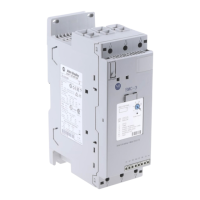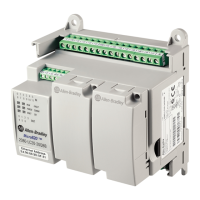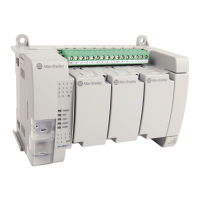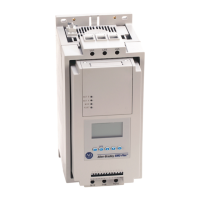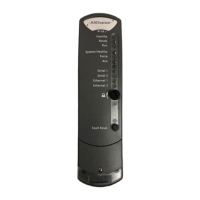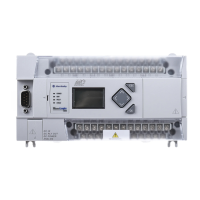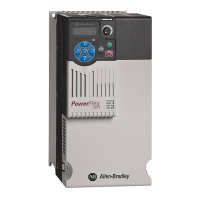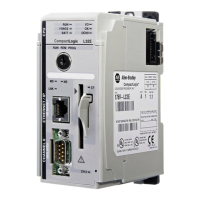Do you have a question about the Rockwell Automation Allen-Bradley 856T-B24LC and is the answer not in the manual?
Identifies intended users and required knowledge for operating the product.
Lists and defines common abbreviations used in the manual.
Provides a link to download necessary software and firmware for the device.
Lists related documents for additional information on the product and system.
Describes the different operational modes of the 856T-B24LC module.
Highlights key physical and functional features of the 856T-B24LC module.
Details the specific features and benefits provided by the IO-Link communication protocol.
Provides instructions for installing the 856T-B24LC module onto a base mount adapter.
Explains the wiring requirements and pin arrangements for connecting the module.
Introduces IO-Link technology as a global standard for sensor/actuator communication.
Outlines the benefits of using IO-Link technology in industrial automation systems.
Describes the ease of integrating IO-Link devices with existing systems.
Explains how IO-Link enables real-time monitoring and diagnostics.
Covers how to monitor the operational status of IO-Link devices.
Discusses storing configurations and automatic device replacement.
Explains the use of descriptive tags for easier programming and troubleshooting.
Illustrates the typical wiring and data flow in an IO-Link system.
Details the different communication speeds supported by the IO-Link device.
Explains how the IO-Link system handles transmission failures.
Discusses factors affecting the system's response time.
Lists the four available data types for IO-Link communication.
Describes the cyclic data transmission of process information.
Indicates whether the process data is valid or invalid.
Explains how device-specific parameters and diagnostics are exchanged.
Describes how devices signal events like errors and warnings.
Covers methods for accessing cyclic and acyclic data.
Details the process of the IO-Link master initiating communication.
Explains how to assign device parameters using IODD files.
Lists the necessary hardware and software for configuring the module.
Instructions for installing the Add-On Profile for device configuration.
Steps to create a new project in Studio 5000 for configuration.
Guide to adding a controller to the Studio 5000 project.
Instructions for adding the Ethernet adapter to the I/O configuration.
Steps to add the IO-Link Master module to the project.
Explains how to register the IODD file for device configuration.
Details using the embedded IODD file for automatic device discovery.
Instructions for downloading the IODD file for the module.
Guide to connecting the module to the IO-Link master.
Steps for downloading the configured project to the PLC.
How to view the module's parameters within the IO-Link Master AOP.
Overview of the five tabs used to configure device functionality.
Displays general product and IO-Link information.
Shows device details like catalog number, firmware, and revision.
Provides circuit status, alarm status, and measurement values.
Allows configuration of stack light modules and parameters.
Displays device status, operation info, and self-test results.
Categorizes hardware faults into non-recoverable, critical, and severe.
Explains error codes indicated by the device status LED.
Describes the timing behavior of the IO-Link status indicator.
Discusses patchcord requirements for connecting Class A and Class B devices.
Explains how to determine module limits based on current consumption.
Details how inrush current is managed and calculated.
Describes how the module handles overcurrent and short-circuit conditions.
Explains how to set up Message Instructions for explicit communication.
Demonstrates configuring a message to read data, like Vendor Name.
Shows how to configure a message to write data, like Application-Specific Name.
Verifies that written data has been correctly applied to the module.
Lists service codes used for specific message instructions.
Explains how to determine source length based on service codes.
Provides detailed technical specifications for the IO-Link module.
Shows the physical dimensions of the IO-Link module.
Details the various operation modes controllable via IO-Link.
Lists device identification parameters like Vendor Name and Product ID.
Details parameters related to module status, alarms, and measurements.
Describes parameters for configuring module types and circuit functions.
Lists parameters for device access locks, service status, and operation info.
Explains system commands for parameter management and resets.
Details the data received from the module, including status and temperature.
Describes the data sent to the module for controlling colors and sounds.
Explains the different operational states of the IO-Link module.
Details the module's behavior and protection during short-circuit conditions.
Lists event codes and their corresponding device status and maintenance actions.
Lists variables that can be reset to factory defaults using specific commands.
Identifies statistical values that can be reset via IO-Link protocol commands.
Provides a guide to identifying and resolving common errors and conditions.
Identifies intended users and required knowledge for operating the product.
Lists and defines common abbreviations used in the manual.
Provides a link to download necessary software and firmware for the device.
Lists related documents for additional information on the product and system.
Describes the different operational modes of the 856T-B24LC module.
Highlights key physical and functional features of the 856T-B24LC module.
Details the specific features and benefits provided by the IO-Link communication protocol.
Provides instructions for installing the 856T-B24LC module onto a base mount adapter.
Explains the wiring requirements and pin arrangements for connecting the module.
Introduces IO-Link technology as a global standard for sensor/actuator communication.
Outlines the benefits of using IO-Link technology in industrial automation systems.
Describes the ease of integrating IO-Link devices with existing systems.
Explains how IO-Link enables real-time monitoring and diagnostics.
Covers how to monitor the operational status of IO-Link devices.
Discusses storing configurations and automatic device replacement.
Explains the use of descriptive tags for easier programming and troubleshooting.
Illustrates the typical wiring and data flow in an IO-Link system.
Details the different communication speeds supported by the IO-Link device.
Explains how the IO-Link system handles transmission failures.
Discusses factors affecting the system's response time.
Lists the four available data types for IO-Link communication.
Describes the cyclic data transmission of process information.
Indicates whether the process data is valid or invalid.
Explains how device-specific parameters and diagnostics are exchanged.
Describes how devices signal events like errors and warnings.
Covers methods for accessing cyclic and acyclic data.
Details the process of the IO-Link master initiating communication.
Explains how to assign device parameters using IODD files.
Lists the necessary hardware and software for configuring the module.
Instructions for installing the Add-On Profile for device configuration.
Steps to create a new project in Studio 5000 for configuration.
Guide to adding a controller to the Studio 5000 project.
Instructions for adding the Ethernet adapter to the I/O configuration.
Steps to add the IO-Link Master module to the project.
Explains how to register the IODD file for device configuration.
Details using the embedded IODD file for automatic device discovery.
Instructions for downloading the IODD file for the module.
Guide to connecting the module to the IO-Link master.
Steps for downloading the configured project to the PLC.
How to view the module's parameters within the IO-Link Master AOP.
Overview of the five tabs used to configure device functionality.
Displays general product and IO-Link information.
Shows device details like catalog number, firmware, and revision.
Provides circuit status, alarm status, and measurement values.
Allows configuration of stack light modules and parameters.
Displays device status, operation info, and self-test results.
Categorizes hardware faults into non-recoverable, critical, and severe.
Explains error codes indicated by the device status LED.
Describes the timing behavior of the IO-Link status indicator.
Discusses patchcord requirements for connecting Class A and Class B devices.
Explains how to determine module limits based on current consumption.
Details how inrush current is managed and calculated.
Describes how the module handles overcurrent and short-circuit conditions.
Explains how to set up Message Instructions for explicit communication.
Demonstrates configuring a message to read data, like Vendor Name.
Shows how to configure a message to write data, like Application-Specific Name.
Verifies that written data has been correctly applied to the module.
Lists service codes used for specific message instructions.
Explains how to determine source length based on service codes.
Provides detailed technical specifications for the IO-Link module.
Shows the physical dimensions of the IO-Link module.
Details the various operation modes controllable via IO-Link.
Lists device identification parameters like Vendor Name and Product ID.
Details parameters related to module status, alarms, and measurements.
Describes parameters for configuring module types and circuit functions.
Lists parameters for device access locks, service status, and operation info.
Explains system commands for parameter management and resets.
Details the data received from the module, including status and temperature.
Describes the data sent to the module for controlling colors and sounds.
Explains the different operational states of the IO-Link module.
Details the module's behavior and protection during short-circuit conditions.
Lists event codes and their corresponding device status and maintenance actions.
Lists variables that can be reset to factory defaults using specific commands.
Identifies statistical values that can be reset via IO-Link protocol commands.
Provides a guide to identifying and resolving common errors and conditions.
| Model | 856T-B24LC |
|---|---|
| Voltage | 24V AC/DC |
| Series | 856T |
| Enclosure Rating | IP65 |
| Terminal Type | Screw Terminal |
| Product Type | Tower Light |
| Light Color | Blue, Clear |
